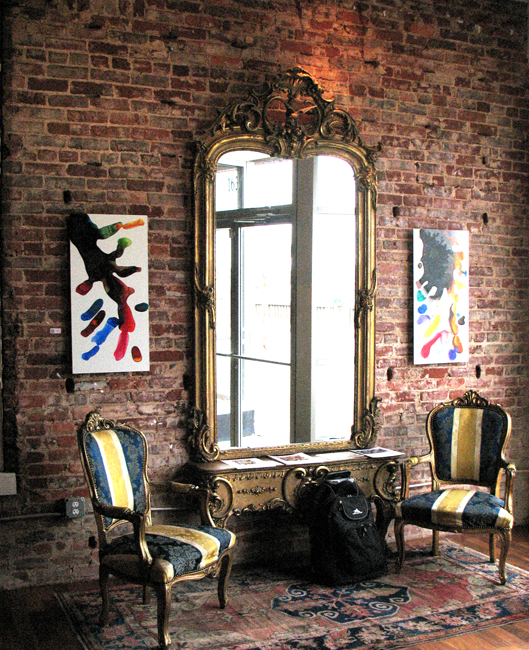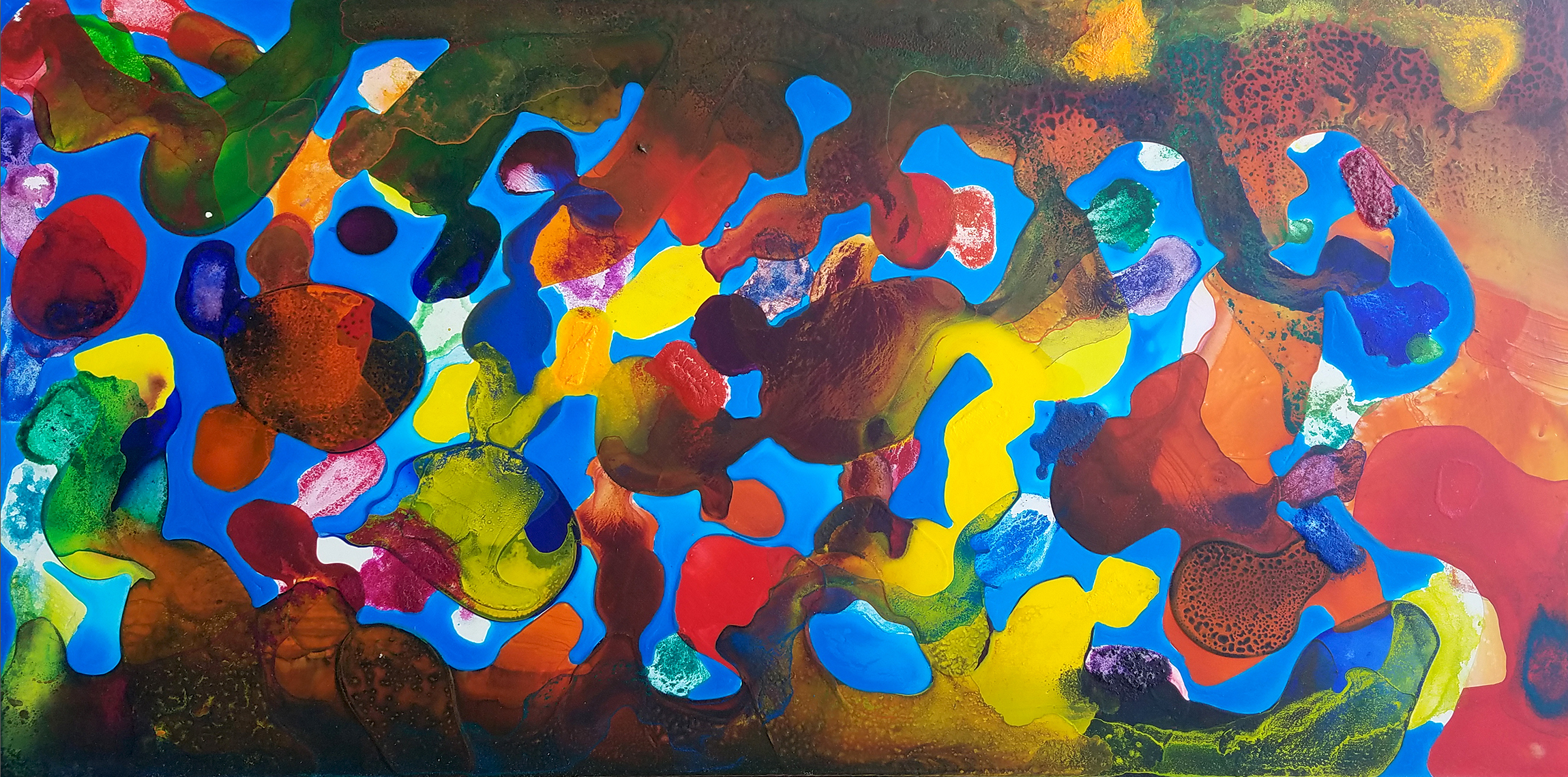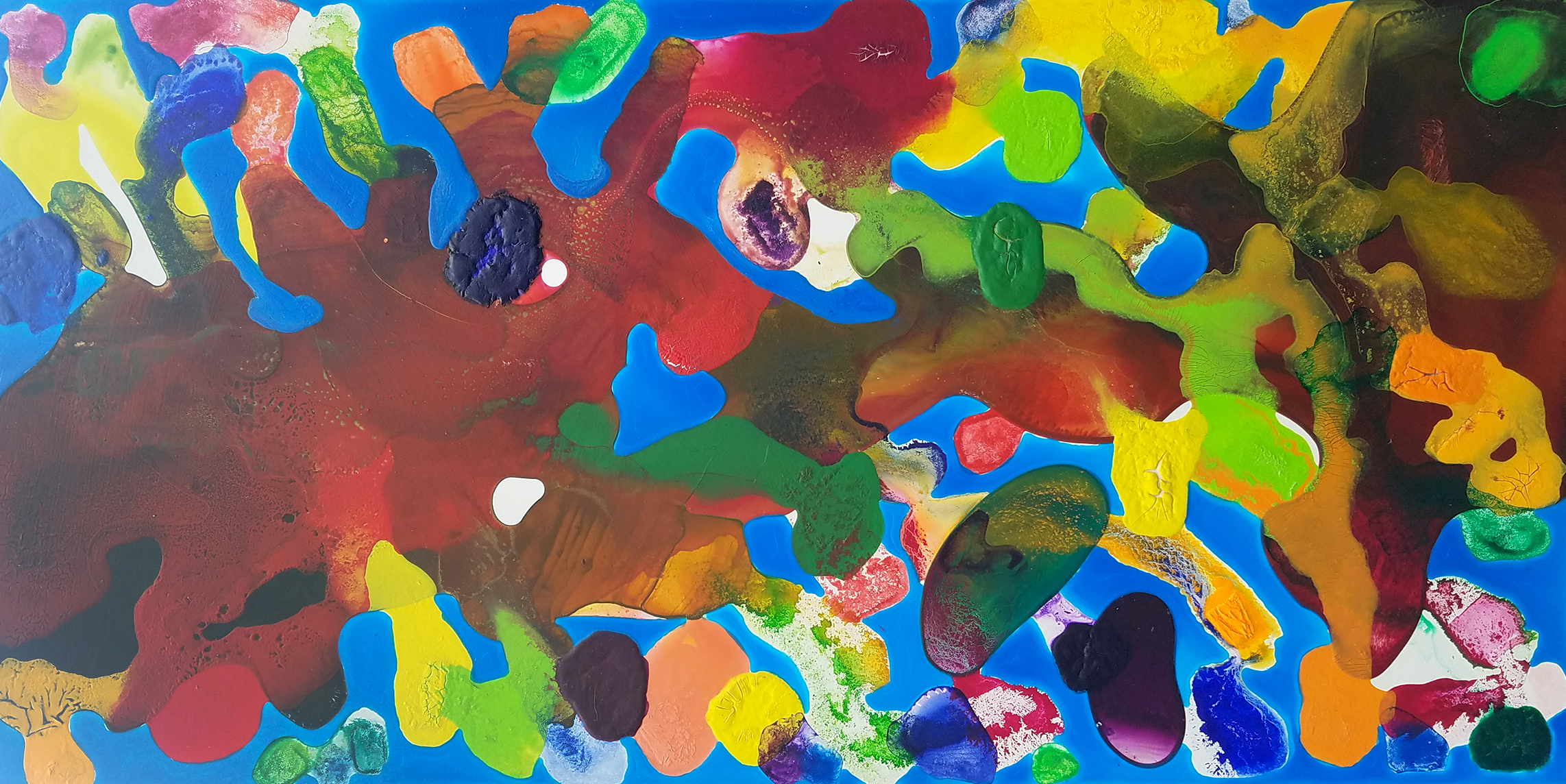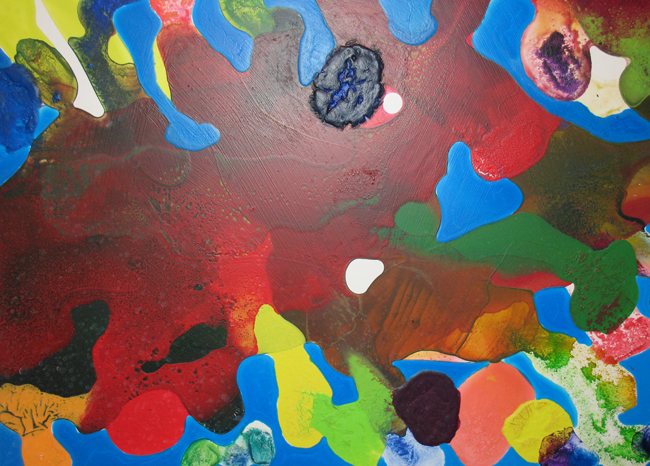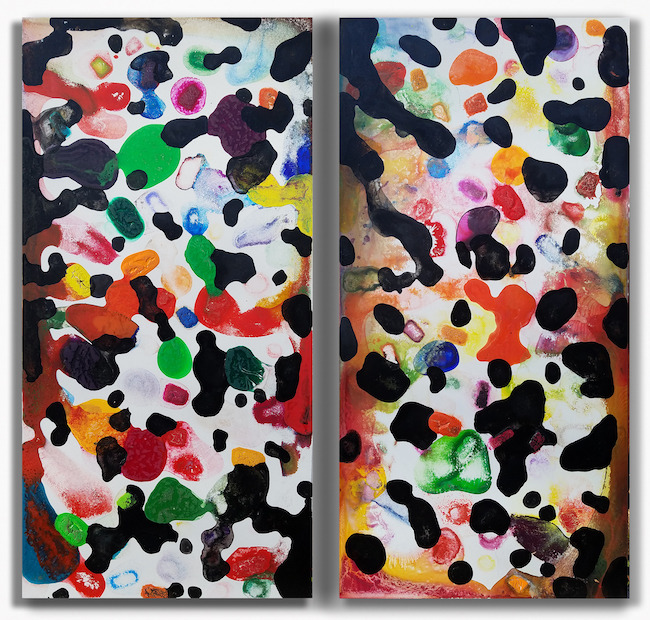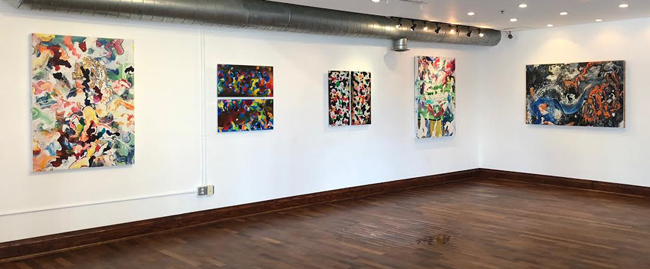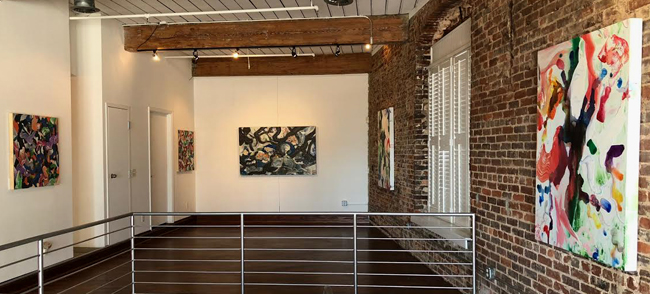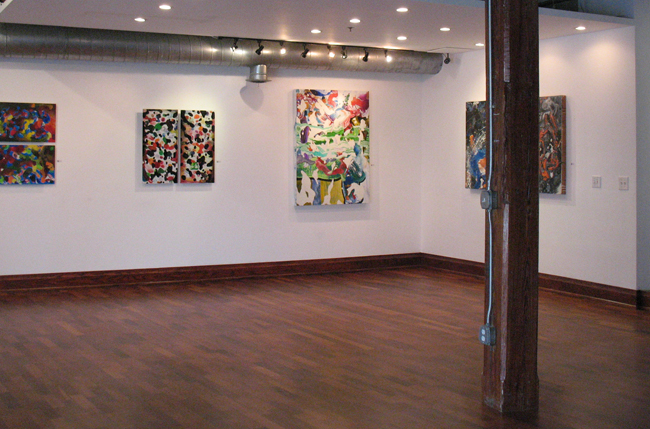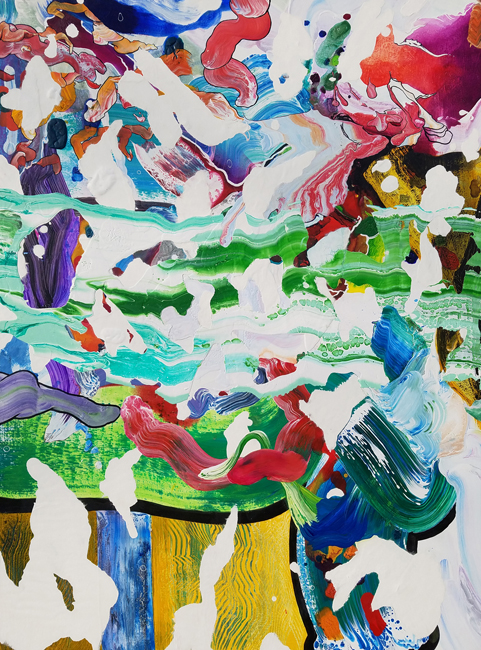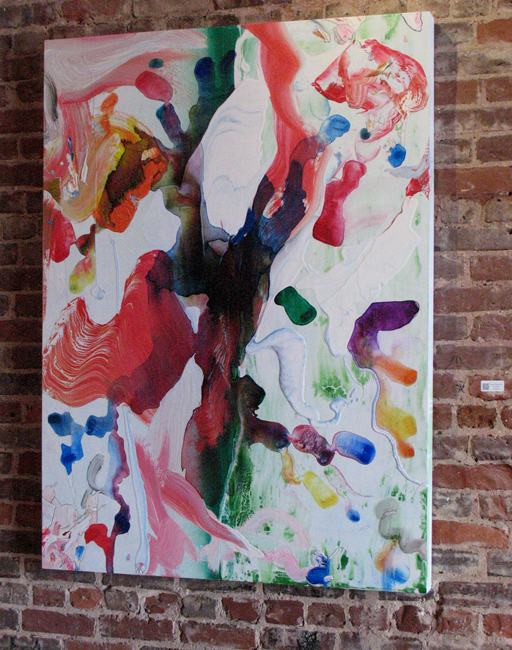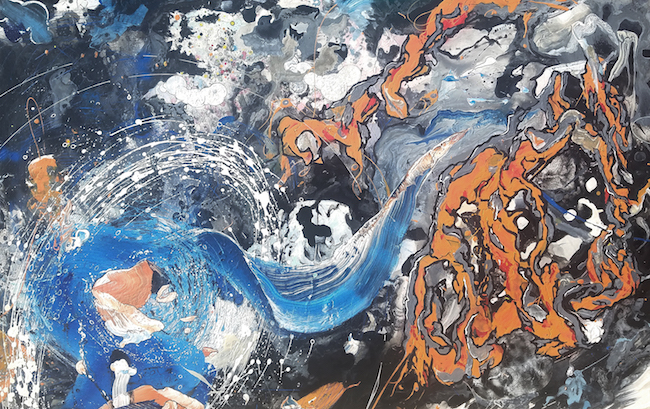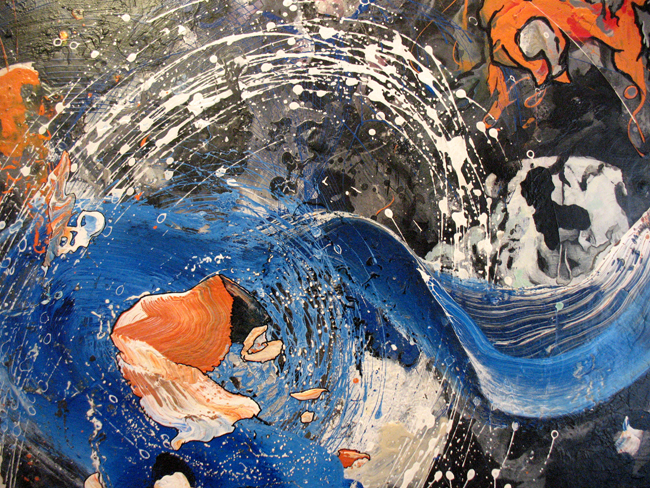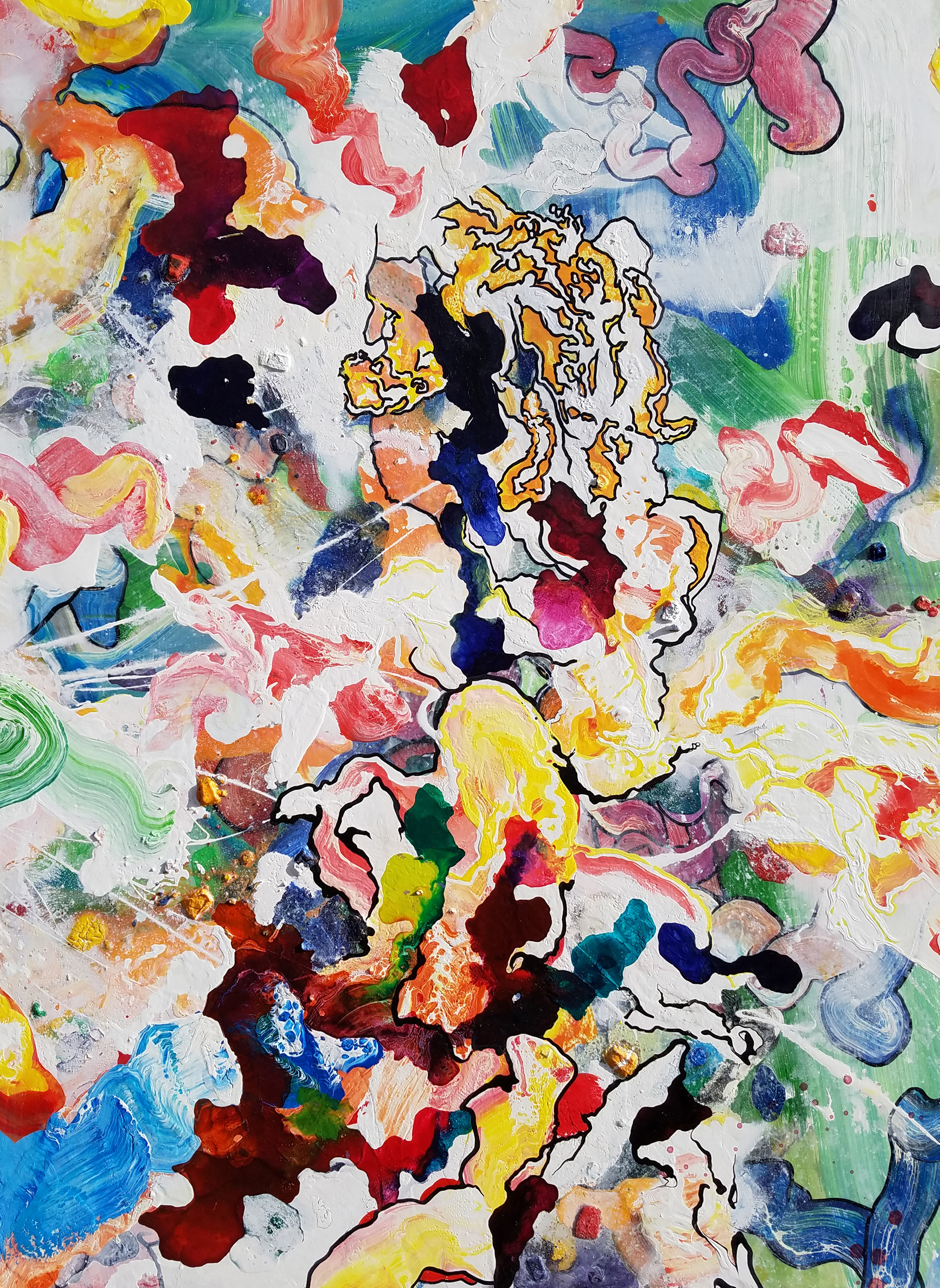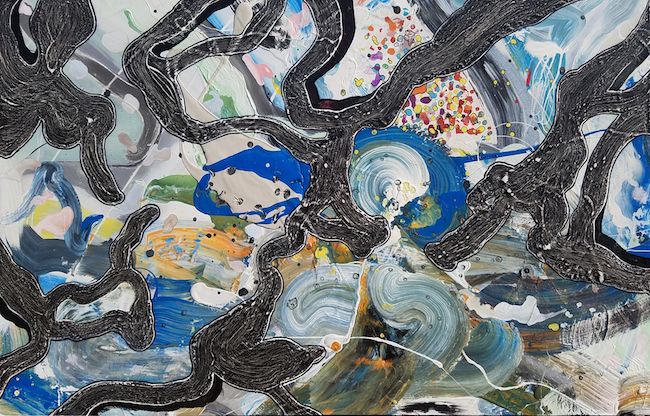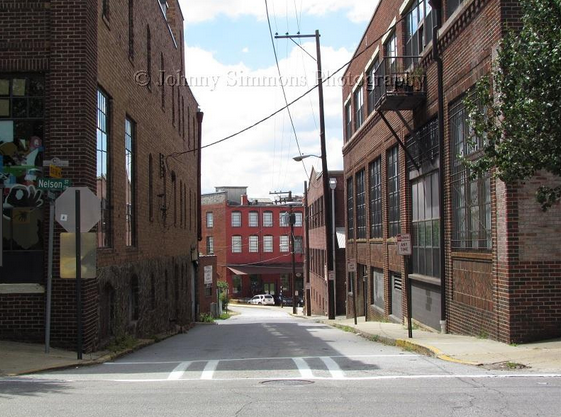The Besharat gallery space at 163-175 Peters Street is in the Castleberry Hill historic district of downtown Atlanta. Located in a magnificent 1875 brick and timber framed building, the gallery is a fantasy of levels and rooms filled with the owner’s private art collection. If I have the history correct, it was once home to carriage and buggy storage, supplying local industry that fronted the railroad tracks running underneath the Peters Street Bridge nearby.
Ron Saunders’ “Pivot” exhibit of his new work opened on February 9th, runs until March when most of the work will be moved to the second floor for the following month. He met me at the gallery this past Sunday and we talked about the paintings he was showing on the street floor. Most of the works were completed over the last three to four months.
Frozen Pigment Painting Series, Iterative Pairs, 1 & 2.
Partial press release: Pivot represents both Ron Saunders’ future endeavors and current art practice. Ron presents a set of new abstract paintings that expose the tension between traditional organization and uncontrolled natural forces resulting in imagery that could be coined “cataclysmic formalismâ€.
Along with this set of newer paintings, Ron continues his frozen pigment painting practice, which was first introduced in 2000. These works stand in opposition to the other paintings, in that they are created almost void of human intervention. These works, which are truly up to chance, are initiated by freezing water-borne paint and allowing it to melt and reconstitute over several days.
Saunders has moved around; he spent three years each in Los Angeles, New York, Seoul, South Korea, and now Atlanta. He teaches part-time at SCAD, and has an MFA from Ohio University. He considers himself a multidisciplinary artist, having engaged in performance art, media and installation.
The two sets of frozen pigment paintings on aluminum below are deceptive in the photos. In person, layering, almost flourescent chroma and dense texture can be seen. Saunders suggests that he wants to eliminate a direct hand in the pieces, although he’s obviously choosing color and location for where the paint will end up. The underlying aluminum casts a luminosity into the paint that gives the works an ethereal sheen.
Most photos courtesy of the artist.
Frozen Pigment Series, Iterations 5 & 6. Acrylic on aluminum, 32x16in
Frozen Pigment Series, Iterations 3 & 4. Acrylic on aluminum, 32x16in
When I first saw these frozen pigment works in the invitation to Saunders’ show, I was reminded of Gerhard Richter’s 2008 “Sinbad Series” that employed painting with lacquer on the back of glass. Coincidentally, the artist had helped hang a 1998 Richter exhibit at the Wexner Center for the Arts in Columbus, Ohio.
Saunders has a completely different approach both technically and perhaps in his objective for the end result. At times, he uses a vat of liquid nitrogen and drips or puts dollops of paint into it, creating flash freezing. Saunders says that the process allows the medium of the paint to take precedence over the role of the mark maker.
Painting with acrylic on plywood panels, he repurposed some of his work from 2011-12, and layering from previous paintings may be glimpsed. He will begin a painting and then use Photoshop to crop and work out color corrections and overlays. In one of the paintings on plywood, he includes a spackling compound to create depth, sanding the layers as he works. He has also used Korean rice paper as a collage element in one of the paintings.
Clotho. Acrylic, hanji and ink on plywood, 54x39in
Lachesis. Acrylic on wood, 54x39in
Saunders’ titles for most of the exhibit’s paintings on wood are derived from Greek mythology, including the Fates, “three conjoined Fates, robed in white, whom Erebus begot on Night: by name Clotho, Lachesis, and Atropos.” My ancient Robert Graves book, The Greek Myths:1 also notes that the Fates myth may have been based on the custom of weaving family and clan marks into a new born child’s swaddling bands, allotting a place in society. Clotho is the ‘spinner’, Lachesis the ‘measurer’, Atropos is ‘she who cannot be turned, or avoided.’ He goes on to suggest that “Zeus, who weighs the lives of men and informs the Fates of his decision, can change his mind and intervene to save whom he pleases, when the thread of life, spun on Clotho’s spindle, and measured by the rod of Lachesis, is about to be snipped by Atropos’s shears.” Don’t mess with Atropos.
Atropos. Acrylic, ink, plaka and spray on plywood, 54x39in
But beyond the Fates, Saunders has included the title Chronos for one of his paintings. Chronos was in Greek mythology, the father of time, not to be confused with Kronos (or Cronus), Zeus’s Titan father, who had a bad habit of eating his newborn sons to avoid being dethroned.
The painting Ananke’s Spindle, is titled for the goddess who was the mate of Chronos, and Plato would suggest that Ananke was the mother of the Fates (the Moirai) from this union. This is in keeping with the belief that Ananke was the goddess that directed the fate of all gods and mortals. She is usually portrayed holding a spindle, her outstretched arms encompassing the world.
The Greek theme did not influence any of the paintings’ genesis, but the pieces in this show could be seen to reflect mythological and earthly conflicts. Saunders’ palette uses black with vivid primary colors, to highlight dynamic brushwork. The titling only intensifies the work’s overall dramatic impact.
Chronos (with closeup from my gallery shot). Acrylic, ink, spray paint on plywood, 40x64in
The exhibit also includes a painting titled Adrasteia, after the nymph who helped to raise Zeus in secret and protect him from his anxious father.
Adrasteia. Acrylic and ink on plywood, 54x39in
Ananke’s Spindle. Acrylic, ink, plaka and spray on plywood, 40x64in
Abstract Dragons #7. Acrylic, ink and spray paint on hardboard, 32×32 in
Besharat backs up to 141 Mangum Street, where the original Pillow Tex mattress factory was discovered by yours truly in 1980, when it was full of sawdust, feathers and 3 floors of huge empty space. The realtor who allowed me access said the entire building could be had for $180k at the time. It has since become mostly lofts, but in the past offered space for performances and art. Back then, artist friends cohabited the spacious 7,000 square feet per floor in the 3 story building, but official records don’t note the area being developed until 1983.
The Besharat Gallery, 163-175 Peters Street, Atlanta, GA 30313. ph: 404.524.4781 Parking: 165 Mangum St. SW, Atlanta, GA 30313. Hours:Â By appointment or
Thursday – Saturday, 10am – 5pm. Email: info@besharatgallery.com
Ron Saunders: http://ronlsaunders.com
http://instagram.com/ronsaunders
https://www.facebook.com/ronsaundersart
Courtesy Johnny Simmons photography

